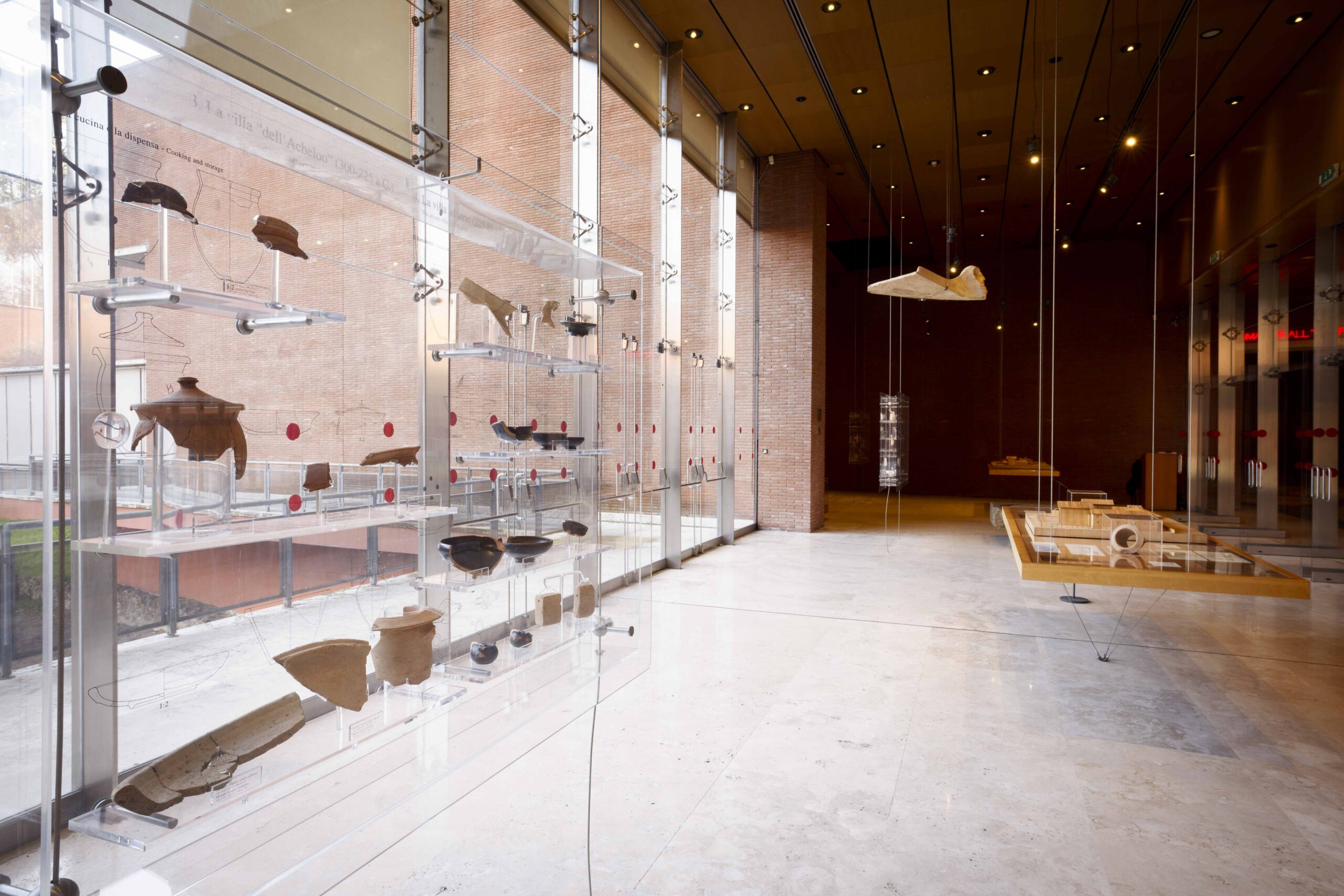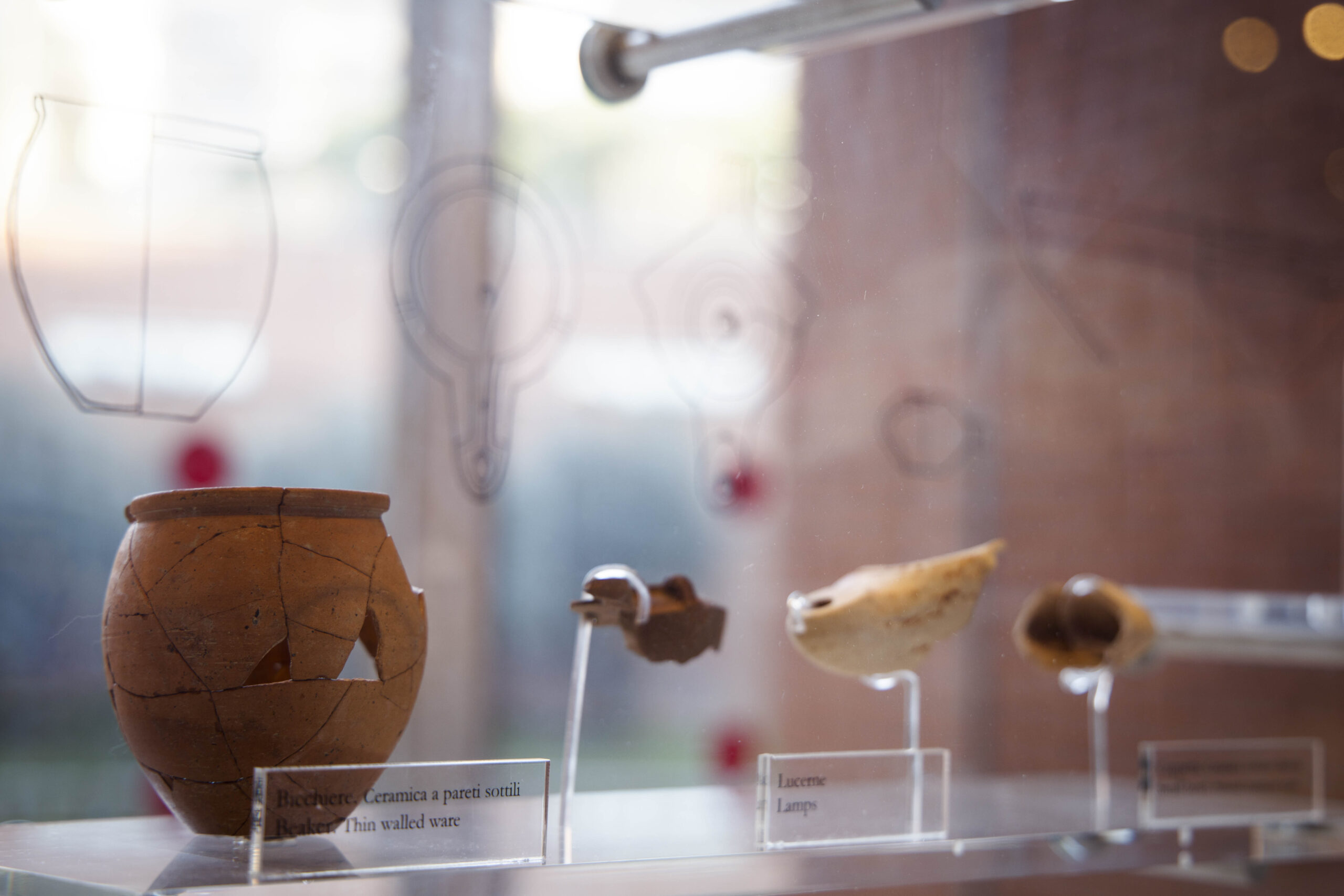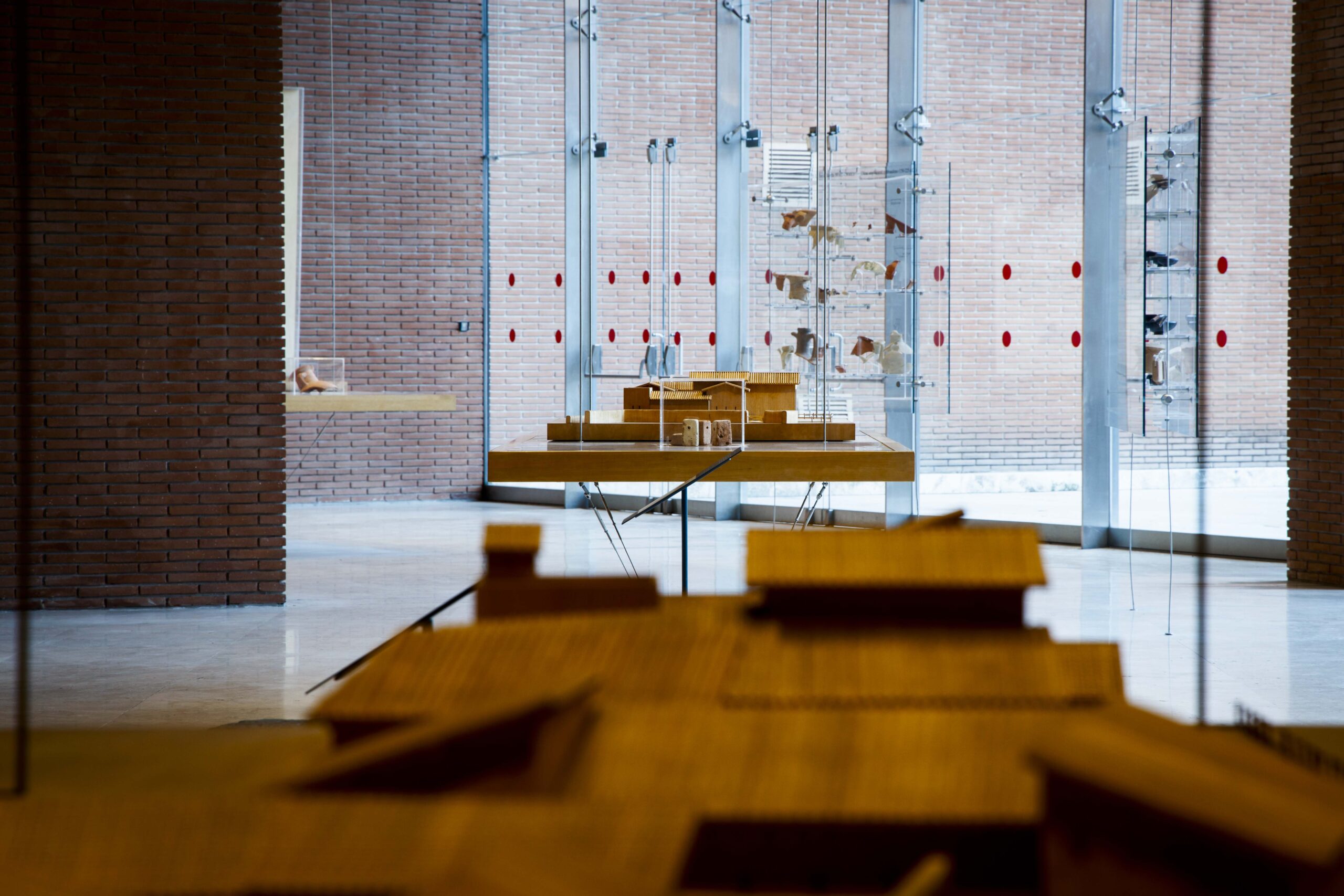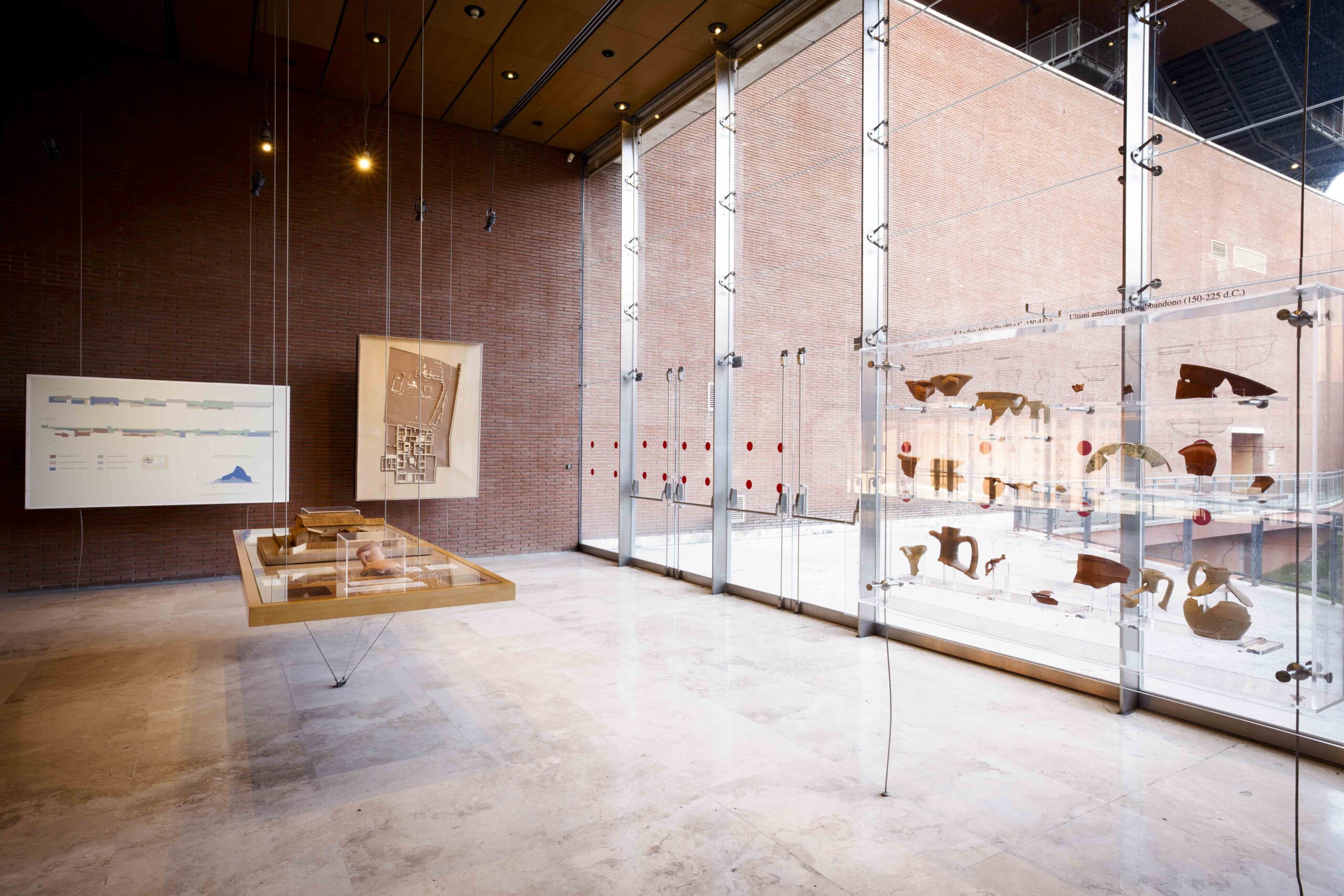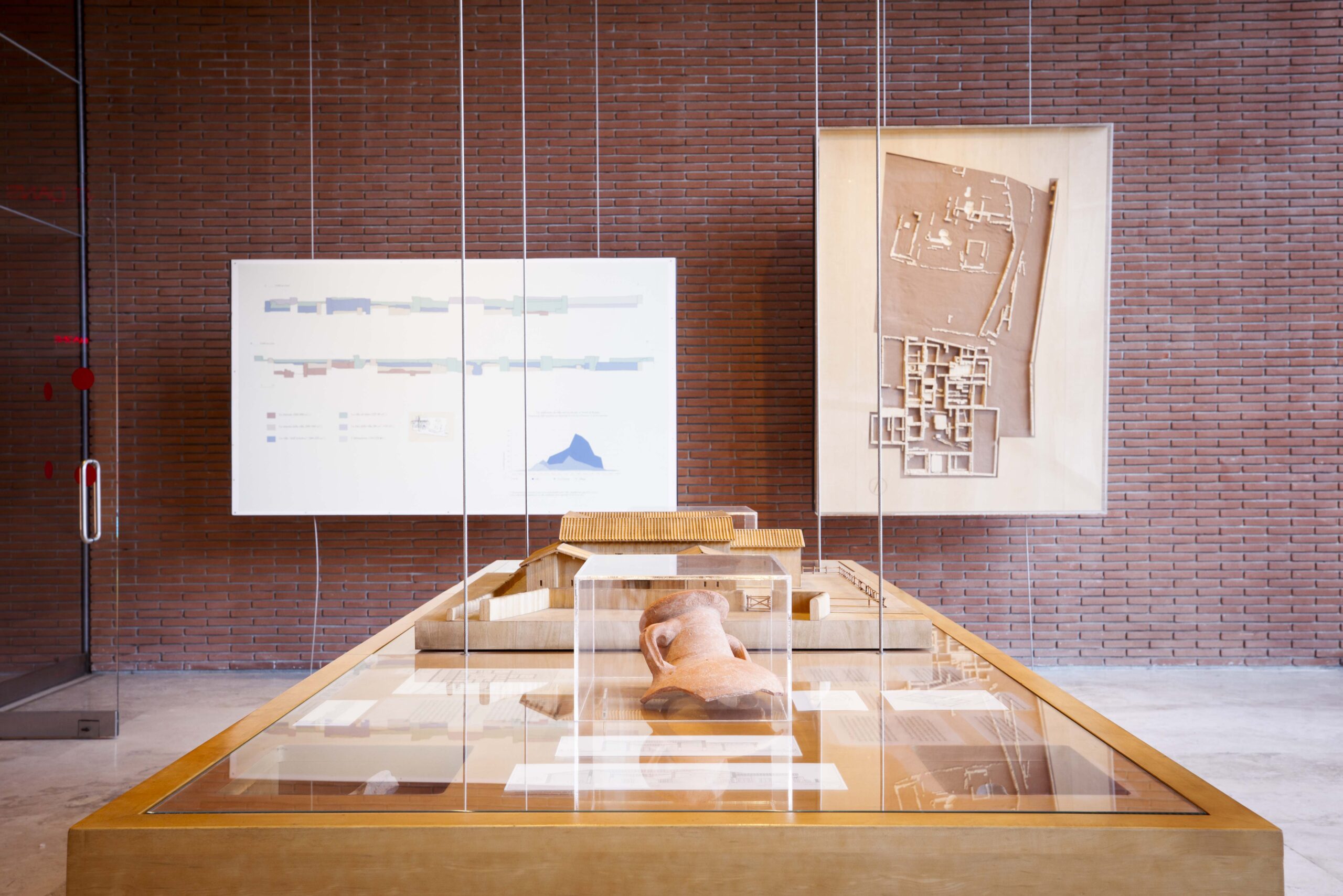
ARCHAEOLOGICAL MUSEUM
In 1995, during the preliminary earthmoving work for the area destined to house the new Auditorium complex, significant remains of a wall from a historical period between the middle of the 6th century BC and the beginning of the 3rd century AD came to light. In 1996-98, a complete excavation of the area was carried out, which led to the discovery of a building with a surface area of over 2,000 m2.
The oldest building, a rustic farmhouse of the Archaic period, probably lived in by a wealthy farmer, citizen and soldier of Rome, was demolished around 500 BC and a large patrician villa, associated with a walled village probably intended for farm workers, was built on its remains (500-300 BC). Subsequent interventions, of which at least three phases have been identified, significantly altered the layout of the villa, which was finally abandoned in the early decades of the 3rd century AD. It has also been suggested that the building was an annex to the sanctuary of Anna Perenna, the nymph worshipped by the Romans on 15 March, the date of the earliest Roman New Year. This suggestion derives from the fact that the fountain and the wood sacred to the Nymph have been identified in recent archaeological researches near Piazza Euclide, in an area not far from the Auditorium complex. The Archaeological Museum is divided into two rooms. In the first, wooden models illustrate the architecture of the farmhouse and the villa in its various phases, together with the most important archaeological materials, especially kitchen, table and cult pottery. Specific contexts, such as a kitchen pantry, a bread oven and an oil press, are also reconstructed, testifying to the production and storage of food. The large corner gutter tile with the head of a river goddess is the symbol of the museum and, in the context of the Auditorium villa, alludes to the nearby Tiber. The second section illustrates the archaeological finds in the area between the Aurelian Wall and the courses of the Aniene and Tiber rivers, crossed by the Roman Nomentana, Salaria and Flaminia roads. Also preserved in this area is a wall in opus reticulatum, part of the villa’s delineating wall, the remains of which can be admired from the terrace accessible from the museum’s rooms. Entrance to the area is free during opening hours.
Winter opening times: October to March from 11 a.m. to 6 p.m. Sundays and public holidays from 10 a.m. to 6 p.m.
Summer opening times: April to October from 10 a.m. to 8 p.m. Sundays and public holidays from 10 a.m. to 8 p.m.
1st January midday to 6 p.m. Closed on 24 December.


